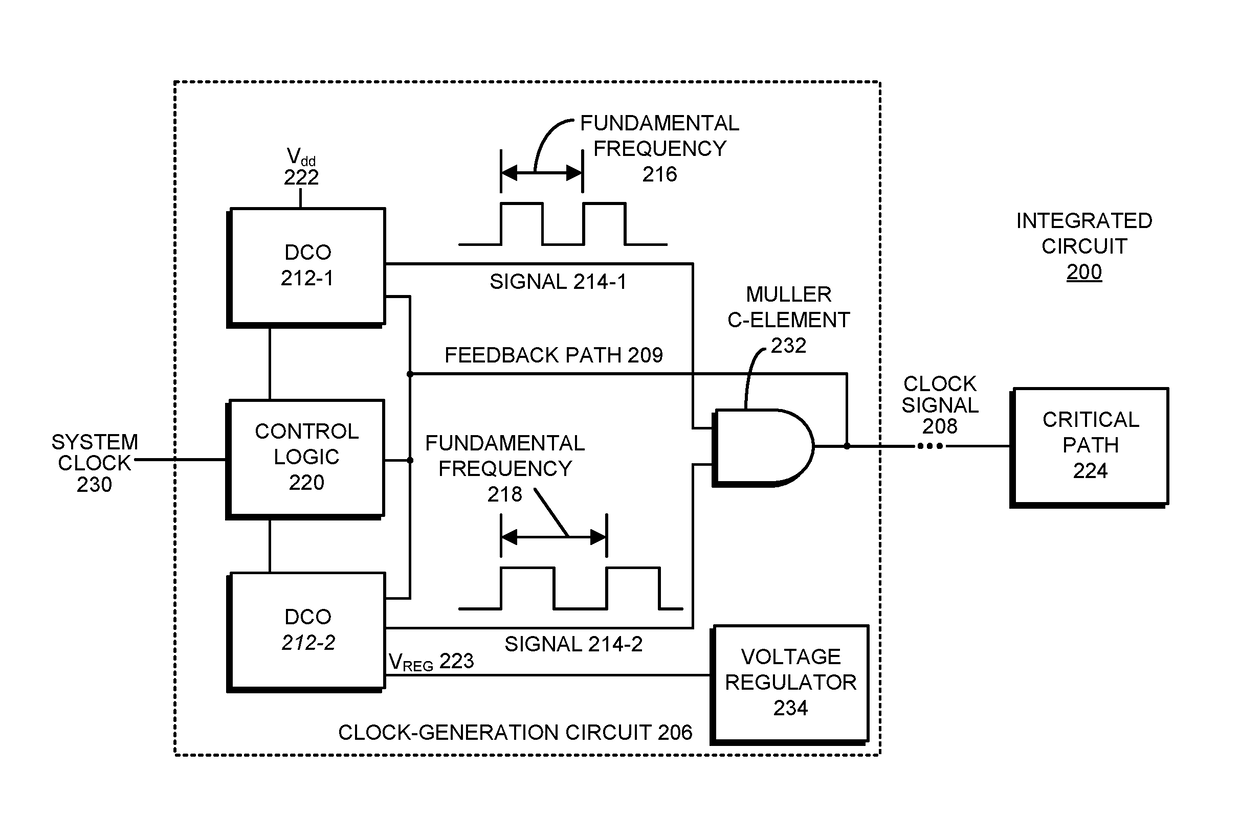Asymmetric locking technique for asymmetric frequency locked loop
a technology of asymmetric locking and loop, which is applied in the direction of automatic control, electrical equipment, etc., can solve the problems of voltage loss, power supply voltage usually decreases, power consumption of integrated circuits,
- Summary
- Abstract
- Description
- Claims
- Application Information
AI Technical Summary
Benefits of technology
Problems solved by technology
Method used
Image
Examples
Embodiment Construction
[0024]FIG. 2 presents a block diagram illustrating an integrated circuit 200 that includes a clock-generation circuit 206, which generates a clock signal 208 for a critical path 224 in integrated circuit 200. Clock-generation circuit 206 includes a digitally controlled oscillator (DCO) 212-1 that creates an output signal 214-1 having fundamental frequency 216, and a DCO 212-2 that creates an output signal 214-2 having fundamental frequency 218. Clock-generation circuit 206 also includes Muller C-element 232 that receives output signals 214-1 and 214-2 and selects the latest-arriving edges in received output signals 214-1 and 214-2 to produce a clock signal 208, which passes through a feedback path 209 into DCOs 212-1 and 212-2 and control logic 220. Control logic 220 also receives a system clock 230, which is used as a target frequency for calibrating DCOs 212-1 and 212-2.
[0025]In some embodiments, the power-supply voltage of DCO 212-2 is provided by a voltage regulator 234. In part...
PUM
 Login to View More
Login to View More Abstract
Description
Claims
Application Information
 Login to View More
Login to View More - R&D
- Intellectual Property
- Life Sciences
- Materials
- Tech Scout
- Unparalleled Data Quality
- Higher Quality Content
- 60% Fewer Hallucinations
Browse by: Latest US Patents, China's latest patents, Technical Efficacy Thesaurus, Application Domain, Technology Topic, Popular Technical Reports.
© 2025 PatSnap. All rights reserved.Legal|Privacy policy|Modern Slavery Act Transparency Statement|Sitemap|About US| Contact US: help@patsnap.com



